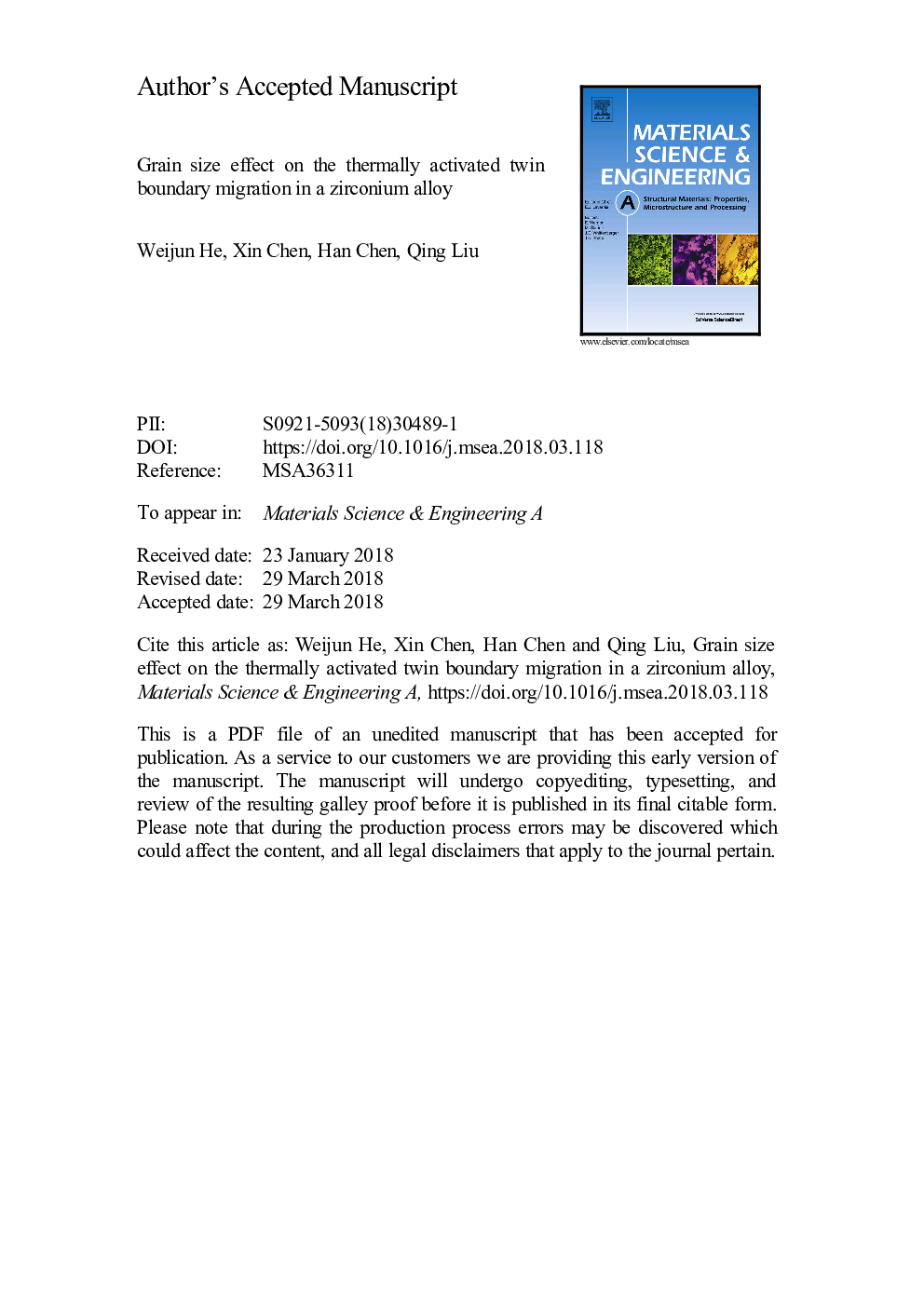| Article ID | Journal | Published Year | Pages | File Type |
|---|---|---|---|---|
| 7972592 | Materials Science and Engineering: A | 2018 | 16 Pages |
Abstract
Zr-4 alloy sheets with two different grain sizes were compressed up to 20%ãalong rolling direction to induce tensile twins. The deformed samples were annealed at different temperatures for 2â¯h. The microstructures and textures before and after annealing were characterized by electron backscatter diffraction (EBSD) to investigate the effect of the initial grain size on the evolution of the twins. Fewer twins were generated in the fine grained sample than in the coarse grained sample, and twinning was activated at higher stress and larger strain due to size effect. Unexpectedly, it was observed that the twin boundary migration started at higher temperature in the fine grained sample. Based on the indexed EBSD maps, it was found that in the fine grained sample twin boundaries were relatively coherent and the stored energy difference on either side of twin boundaries was lower. On the opposite, in the coarse grained sample, twins were less deformed but twin boundaries lost their coherency. Thus, in fine grained sample, twins had a lower mobility and lower driving force for the twin boundary migration during annealing.
Related Topics
Physical Sciences and Engineering
Materials Science
Materials Science (General)
Authors
Weijun He, Xin Chen, Han Chen, Qing Liu,
